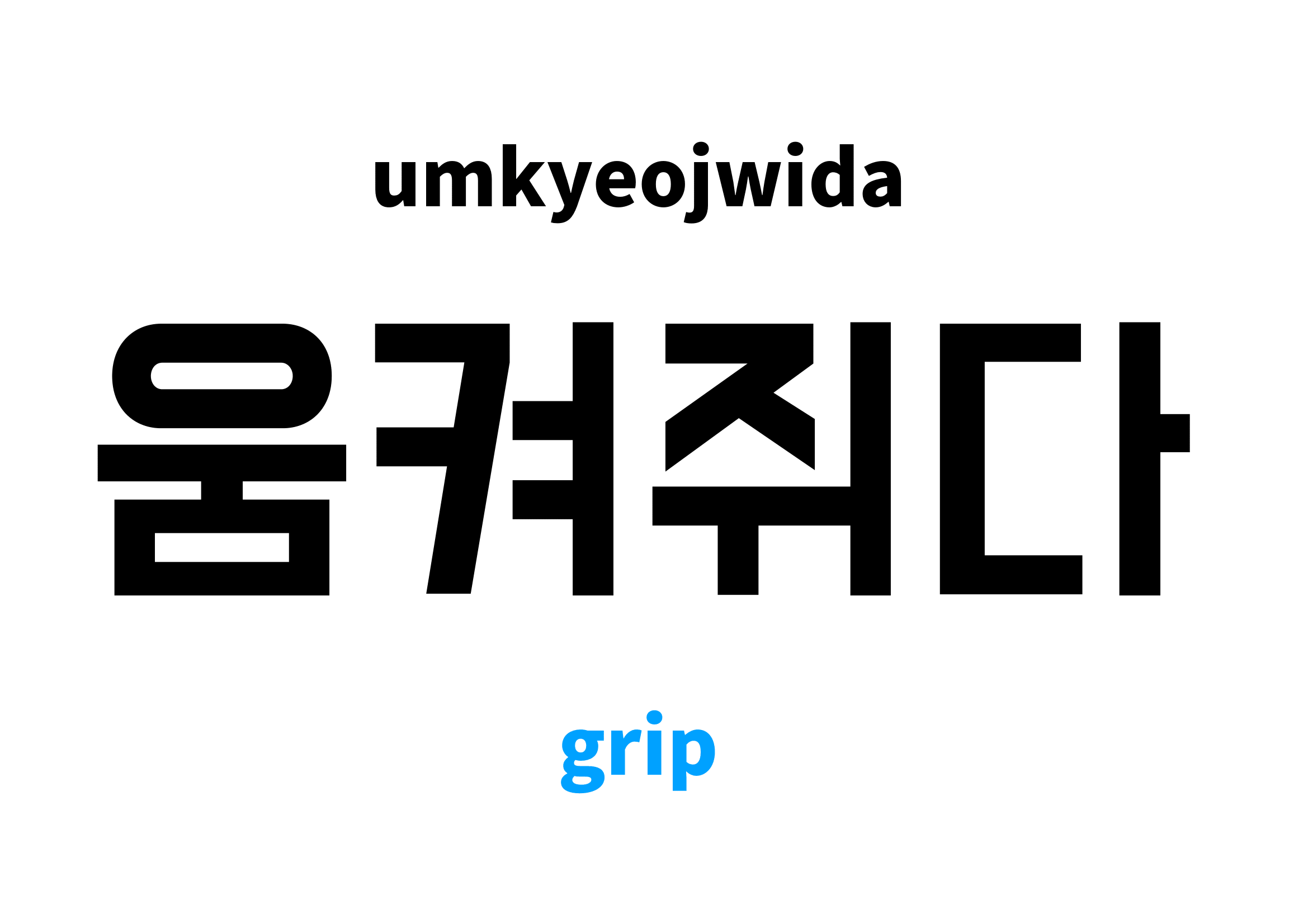 grip in Korean is 움켜쥐다. For examples, you can use like [움켜쥔 손, 가방을 움켜쥐다]. In this post you will learn how to pronounce and use 움켜쥐다 along with examples.
grip in Korean is 움켜쥐다. For examples, you can use like [움켜쥔 손, 가방을 움켜쥐다]. In this post you will learn how to pronounce and use 움켜쥐다 along with examples.
Basics
| Word | Part | Chinese | Sound |
| 움켜쥐다 | verb | — | 움켜쥐다 |
움켜쥐다 Meaning
| Meaning | Explanation |
| grip; grasp tightly; clasp | To hold something tight in one’s hand and not release it by clenching one’s fists. |
How to Conjugate 움켜쥐다
① Formal High (합니다체)
| Present |  움켜쥡니다 움켜쥡니다 |
| Past |  움켜쥐었습니다 움켜쥐었습니다 |
| Past Perfect |  움켜쥐었었습니다 움켜쥐었었습니다 |
| Future |  움켜쥘 것입니다 움켜쥘 것입니다 |
| Condition |  움켜쥐겠습니다 움켜쥐겠습니다 |
② Informal High (해요체)
| Present |  움켜쥐어요 움켜쥐어요 |
| Past |  움켜쥐었어요 움켜쥐었어요 |
| Past Perfect |  움켜쥐었었어요 움켜쥐었었어요 |
| Future |  움켜쥘 것이에요 움켜쥘 것이에요 |
| Condition |  움켜쥐겠어요 움켜쥐겠어요 |
③ Informal Low (해체)
| Present |  움켜쥐어 움켜쥐어 |
| Past |  움켜쥐었어 움켜쥐었어 |
| Past Perfect |  움켜쥐었었어 움켜쥐었었어 |
| Future |  움켜쥘 것이야 움켜쥘 것이야 |
| Condition |  움켜쥐겠어 움켜쥐겠어 |
④ Formal Low (한다체)
| Present |  움켜쥔다 움켜쥔다 |
| Past |  움켜쥐었다 움켜쥐었다 |
| Past Perfect |  움켜쥐었었다 움켜쥐었었다 |
| Future |  움켜쥘 것이다 움켜쥘 것이다 |
| Condition |  움켜쥐겠다 움켜쥐겠다 |


Comments